Reviews
Trent Harris
USA, 2000
Credits
Review by Rumsey Taylor
Posted on 12 May 2008
Source projected DVD
Related articles
Reviews The Beaver Trilogy by Katherine
Categories The 2008 Independent Film Festival of Boston
The Beaver Trilogy begins in a setting of incontestable banality, a parking lot in Salt Lake City, Utah, in which a young man - deemed The Beaver Kid in the first of a triumvirate of scenarios - is encountered by chance. There’s nothing exceptional about this opening scene, only the kid’s competent impressions of John Wayne, Sylvester Stallone, and Barry Manilow, yet there’s a tangible chemistry between the filmmaker and subject. The two exist symbiotically, one inspiring the other in an unfortunately brief, impromptu scenario.
It is this symbiotic quality of Trent Harris’ film that is subjective and impossible to describe—watching it you get the sense that you’re seeing something pure and rare and somehow humane. Harris’ footage is unembellished and shot on what would now be perceived as dated consumer-grade video, but his subject is totally enthralling—he’s so excited to be on camera he can barely contain himself (he seems to think this random meeting will be broadcast on television). His speech is interrupted by hiccupping laughter, and he is always smiling. You laugh, too, at his absurd impressions and his absurd car (a Chevy Impala, its interior entirely upholstered in red, images of women embossed in the windows), but you’re also happy for him to have stumbled on this moment that triggers such incredible excitement.
The Beaver Kid is a rare “character” in film. I describe him as such because his mannerisms and behavior are very much coerced. What we’re observing in the initial scene of the Beaver Trilogy is real, but it is also a performance. And it’s one, the film will subsequently prove, so wholly unique, so unadulterated and unrehearsed that it amounts to one of those moments for which cinema exists, a performance expressed outwardly toward an audience and yet one created in respect to the presence of a camera.
Trent follows the young man for only a moment longer, filming his car as the kid waves and drives off. But this, thankfully, is not the conclusion of his chance encounter. In the next shot Trent is reading a letter the young man sent him, announcing a talent show and inviting Trent to come film it. He is invited to a mortuary, at which our young talent will have his makeup applied. It’s at this point that the film becomes unforeseeably more surreal (and it will become yet more surreal): the Beaver Kid is seated in a chair, more-or-less facing the camera directly, as a woman decorates his face in mascara and eye shadow. Moments later, he dons a wig and his “threads” - leather pants and jacket - and he’s become what he refers to as “Olivia Newton-Dawn,” a loose facsimile of the popular singer and actress, but more than that an original creation, a pitiable monster that’s become frightfully bestowed with life. You cannot for an instant take your eyes off him.
The ensuing talent show is a compendium of local talent, song and dance emceed by a local principal (the Beaver Kid himself even scrubs off the makeup for a competent rendition of Manilow’s “New York City Rhythm”). There’s the sense that this isn’t entirely rare or unique enough to have warranted filming, but this perception is lost once Olivia Newton-Dawn walks stiltedly onto the stage and sings “Please Don’t Keep Me Waiting.” The tone of the original song is one of desire, and includes the following chorus:
Please don’t keep me waiting
I can’t hold on much longer
Please don’t keep me waiting
I can’t love you any stronger
Please don’t keep me waiting
I can’t take this kind of pain
Take me back in your arms once again
Despite the Beaver Kid’s incompetence in matching Newton-John’s octave range, he performs this particular song with great effectiveness, and it is effective not because of the kid’s proficiency as a singer but in his purity in communicating something he - dressed rather imperfectly as a woman - is best equipped to communicate. He is describing his insecurity so nakedly the moment of his singing becomes almost inappropriately intimate. This scene is, however, riveting in its austerity (it resembles the eerily prophetic Lady in the Radiator sequence in Eraserhead), and it’s shot curiously, from a hand-held perspective with the cameraman (Harris himself, I assume) directly onstage with the Beaver Kid, his made-up face occupying the entire composition and the sparse audience (revealed to consist almost only of participants in the talent show) unseen. It’s affrontingly intimate, and although we have permissively laughed at this person earlier, doing so now would be a gesture of such tactlessness that you sit in awe, transfixed by the presence of something tortuously real. Shortly hereafter, the film ends.
And suddenly it begins again, prefaced with the title The Beaver Kid 2, in which the events in the first short film are remade almost verbatim, only in black & white, and with Sean Penn portraying the excitable Beaver Kid. This precedes a third installment - The Orkly Kid, starring Crispin Glover - hence the Beaver Trilogy. Both remakes honor the original with great responsibility—the transformations into Olivia Newton-Dawn (or Oliva Neutron-Bomb, in Glover’s case) is iterated almost identically, and Glover’s and Penn’s impersonations - and impersonations of impersonations - are ably exact. Much of my great enthusiasm for this film stems from its first portion, which is so pure and bizarre it would singularly warrant recommendation. But it is the subsequent installments, in their responsibility in clarifying Harris’ intentions and in their utility for juxtaposition, that engender The Beaver Trilogy as a work of considerable ingenuity.
The three portions of the film are to be considered as a singular whole, and because of their combination The Beaver Trilogy is propelled largely by subtext. Before the final two portions ensue, some of the more dramatic aspects of the first part may not be entirely evident. The kid’s performance wasn’t derided by anyone, and the kid himself seems happy and comfortable in the final shot, waving as Harris drives away. The second two films concern humiliation more pronouncedly, both Penn’s and Glover’s depictions of the Beaver Kid set audiences aghast when they’re first seen fully in drag. Seeing this humiliation depicted so clearly makes the original Beaver Kid seem both more pitiable and courageous than he may have originally been.
The subsequent installments are fine in and of themselves—at the very least, they exist as unlikely and early showcases for Sean Penn and Crispin Glover (both of whom portray the Beaver Kid very well). But the three films together foster comparison, and this is the film’s bizarre genius: reiterating the same events over and over so that its themes are subsequently defined and clarified. Ultimately I sensed that the additions in parts 2 and 3 aren’t entirely fictional, but aspects Harris either omitted in the first film or didn’t have the liberty to film. For one, both sequels include a brief exchange in which the filmmaker mucks up the tape in his video camera, and the Beaver Kid is suddenly afraid that the footage is ruined and he won’t get on television. It’s unknown if this actually happened when Trent encountered the original Beaver Kid, and yet this detail in the sequels seems determined and not superfluous. Given the sequels’ otherwise direct replication of the original film, my presumption is that something like this actually happened, and that the later additions in both sequels are similarly drawn from truths.
Both sequels have an added conclusion that follows Olivia Newton-Dawn’s number. We see the Beaver Kid in his bedroom, a poster of Newton-John and Farah Fawcett on the wall, and he phones Trent, expressing his hesitance to have the footage exhibited. This seems a bit out of character for the Beaver Kid, who is completely enthusiastic in the first part. But once you see this, you get the impression of a depression and humiliation that remain subtextual. The Orkley Kid, the most movie-ish of the three, pronounces this aspect of humiliation more clearly. Glover’s Beaver Kid is regularly made fun of, and when he eventually performs he is without accompaniment (the first Beaver Kid had a backup band). He is visibly isolated, and it makes the first Beaver Kid’s isolation more probable. The compositions in the final two films are also more distanced and objective, and significantly both remakes include Trent Harris as a character, the aforementioned filmmaker Terrance. He is an insensitive, exploitative man in both films (although he is not portrayed by Harris himself), and removes his camera off the tripod so that he can kneel onstage and film the Beaver Kid as Olivia Newton-Dawn, blatantly compromising the performance to the audience. This aspect of obtrusion I feel is a bit exaggerated in parts 2 and 3, as is the Beaver Kid’s isolation and insecurity. But these are presumptions on my part, and perhaps, in the sequels, in presenting himself as an exploitative interferer Harris is repenting for having exacerbated his subject’s humiliation.
I don’t think Harris’ film is exploitative, exactly, but in filming the kid’s intimate performance he has both magnified and captured his subject’s insecurity, and this insecurity isn’t affirmed until the later two films, in which it is only affirmed indirectly. The first film ends not inconclusively but naturally. You’re left with the sense that the Beaver Kid has enjoyed the performance and the opportunity, and lives on. It’s not until later that one realizes how damaging the experience may have been. The later films explicate more: Penn’s episode concludes in a phone call, from a fan expressing her pleasure with his performance. This call opportunely dissuades his suicide attempt. This suicide attempt is one of the additions to the later two films, and it is uncomfortably harrowing, especially since Penn’s performance as the Beaver Kid is almost equally endearing. When, after phoning Terrance to quietly express his humiliation, he places the barrel of a shotgun into his mouth, the effect is unexpectedly disturbing.
In an episode of “This American Life” - which is now nearly integral to this film’s biography - Harris speaks of the aftermath of the first film, which is addressed in the subsequent installments without absolute clarification. Some time after the first film was completed he received a call from the Beaver Kid, expressing his hesitance to have the footage aired. Harris’ description of this episode notably resembles its corresponding iterations in the second and third films. He proceeds to tell of another phone call that informed him that his young subject was hospitalized from a gunshot wound, and this circumstance makes the potential suicide depicted in parts 2 and 3 immeasurably more harrowing.
What I ultimately question in The Beaver Trilogy is the aspect of fiction in the second and third portions, how, initially, they may be perceived as exaggerated but nonetheless truthful depictions of what we’ve already seen. Each emphasizes the most obviously entertaining aspects of the first film - the kid’s impressions, his transformation into and ultimate performance as Olivia Newton-Dawn - and omits other portions—the performances of others in the talent show, the conclusion where the kid is leaning against his Chevy Impala, waving and smiling as Harris drives away. They’re clearly “movies” based on a “reality” we’ve already been presented with, but they serve to enhance this reality, not to subvert it, not to compromise it, and not to profit off of it. At the most basic level, in iterating this episode over and over, Harris has endeavored to give his young subject an audience, and at the very least, to give happy endings to a story that doesn’t exactly have one.
More The 2008 Independent Film Festival of Boston
-

Crawford
2008 -

Vexille
2007 -

American Teen
2008 -

Mister Lonely
2007 -

Intimidad
2008 -
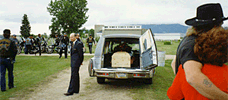
Meadowlark
2008 -

Second Skin
2008 -
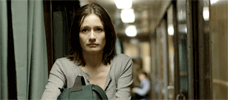
Transsiberian
2008 -

The Linguists
2008 -

Big Man Japan
2007 -

At the Death House Door
2008 -
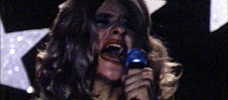
The Beaver Trilogy
2000 -
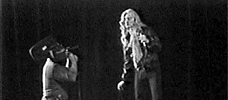
The Beaver Trilogy
2000 -

Nerdcore Rising
2008 -
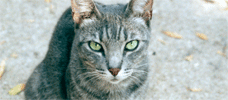
Goliath
2008 -
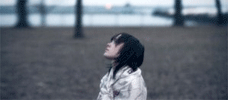
The Tracey Fragments
2007 -

Saviours
2008 -

Medicine for Melancholy
2008 -

Severed Ways
2007 -

Not Your Typical Bigfoot Movie
2008 -

Not Your Typical Bigfoot Movie
2008 -

Jump!
2007 -

Encounters at the End of the World
2007
We don’t do comments anymore, but you may contact us here or find us on Twitter or Facebook.



